Small apartments from 100 years ago offer townhome alternative
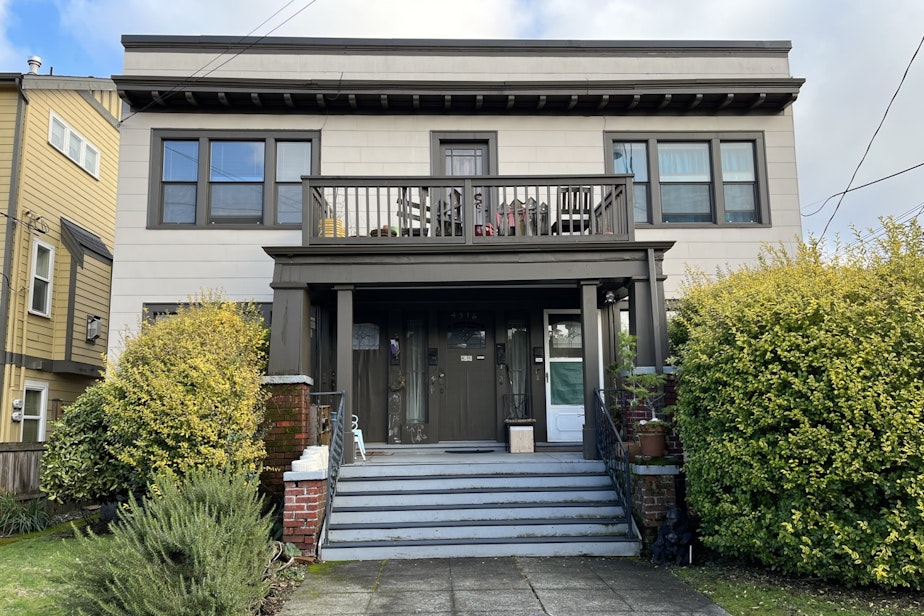
A century ago, Seattle faced an even bigger housing shortage than it does now.
Buildings people built in response offer clues as to how we might respond today.
But it’ll take some changes from Olympia to make that happen.
Over the last 100 years, a growing tangle of laws has made it difficult to build simple, efficient forms of housing that could bring higher density to quiet neighborhoods.
Those laws have encouraged building types that a lot people don’t like — for example, townhomes.
“If you can’t dance in a house, it’s not a house. And there’s not enough room in a townhome to really move around," says Gol Hoghooghi, a real estate agent out walking her dog in Seattle's Judkins Park neighborhood. “It seems like we’re being mentally trained to live in smaller and smaller spaces — smaller places to socialize, to have a party.”
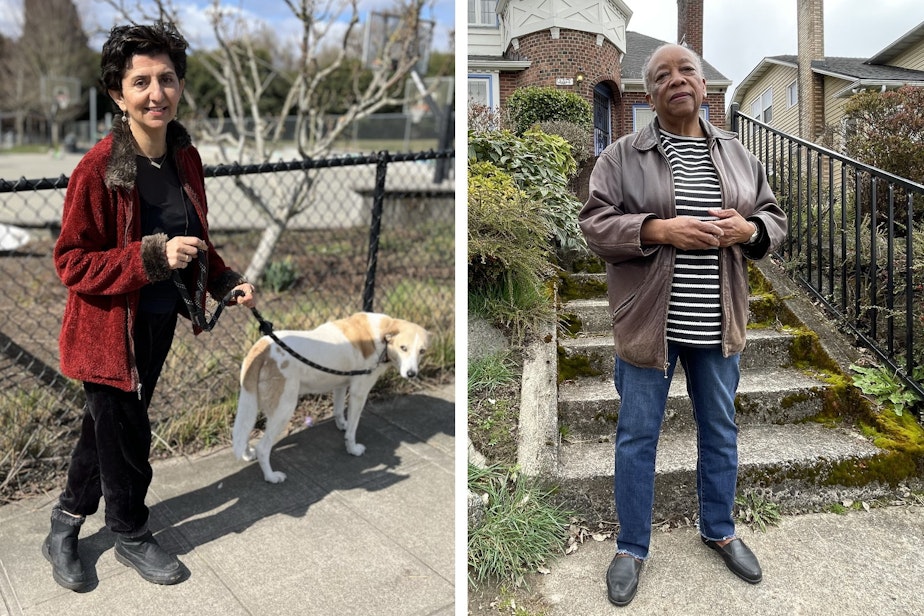
Carrie Richardson lives in a single-family home on a quiet street in Mount Baker. She says townhomes are helpful, "because now there are more children here. When I moved here, there were only three kids on two blocks."
Sponsored
But townhomes are far too expensive, Richardson says.
“It takes two working people to even afford a townhome,” she says.
Another reason many people don’t like them — their layout. They’re inefficient. They’re tall and skinny, with so many stairways.

“I have a whole long list of complaints about townhouses,” says architect Matt Hutchins. He says we can look to the past for an alternative to townhomes that could work today.
Sponsored
Hutchins drives around Phinney Ridge to look for examples. Mixed among the houses, he points out simple, boxy apartment buildings that used to be common in Seattle, over 100 years ago. If built today, they could make affordable condominiums on quiet residential streets.
He stops in front of one of them.
“I’m obsessed with these little apartment buildings,” he says.
This one has four small apartments, symmetrically arranged around the front porch, and a fifth unit, a mother-in-law apartment, in the basement.
A man comes out. He introduces himself as Kevin Murphy, resident of the Cowboy Hotel.
Sponsored
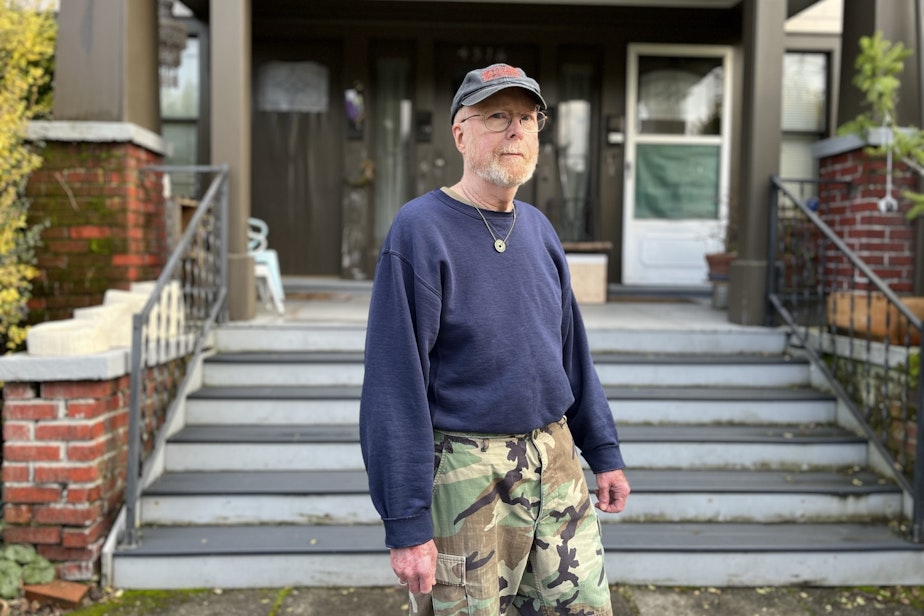
Why does he call it the Cowboy Hotel?
“It’s got a big porch on the front and a balcony up above, and it looks like something from an old cowboy town," Murphy explains. "If I have to tell someone what the building looks like, I just tell them it’s the one that looks like a cowboy hotel."
Do they get it from that description?”
“Oh yeah," he says. "Because everything else is more modern around here. You know, or smaller houses and stuff.”
Sponsored
Just to be clear, it’s not really a hotel; it’s an apartment building. It was built in the early 20th century, a time when Seattle was growing even more explosively than it is today.
In the years between 1900 and 1910, Seattle's population tripled. The Alaska Gold Rush was underway and the timber industry was booming too, in part because cities like San Francisco kept burning down.
In Seattle, builders were putting up lots of single-family homes. To accommodate all these newcomers, they also started cranking out these small apartment buildings, not much bigger than a large house.
Hutchins wants to revive that old style of apartment, which could also work as affordable condominiums today.
Hutchins explains why it's important to bring four- to six-unit buildings like the Cowboy Hotel back, rather than just building more townhomes.
Sponsored
“Because they’re more efficient," he says. "Less stairways, they’re cheaper to build."
Second, "because they’re relatively compact, they’re more energy efficient."
And third, "because of that compact form, there’s actually more space in the back to preserve tree canopy and a garden in the backyard.”
Hutchins says, as buildings like that cover more and more of a city block, great things can happen. If there are no parking requirements, large backyards can become a sort of shared park. If the buildings are allowed to span from property line to property line, the greenspace in the middle effectively becomes a private park, accessible only to the building occupants via their backdoors. This is similar in form to housing in some European cities.
But there are obstacles to this vision, like that tangle of laws. They vary from city to city, and make it hard to build anything besides townhomes.
These include laws that discourage simple boxy shapes in favor of complicated shapes that are more expensive to build.
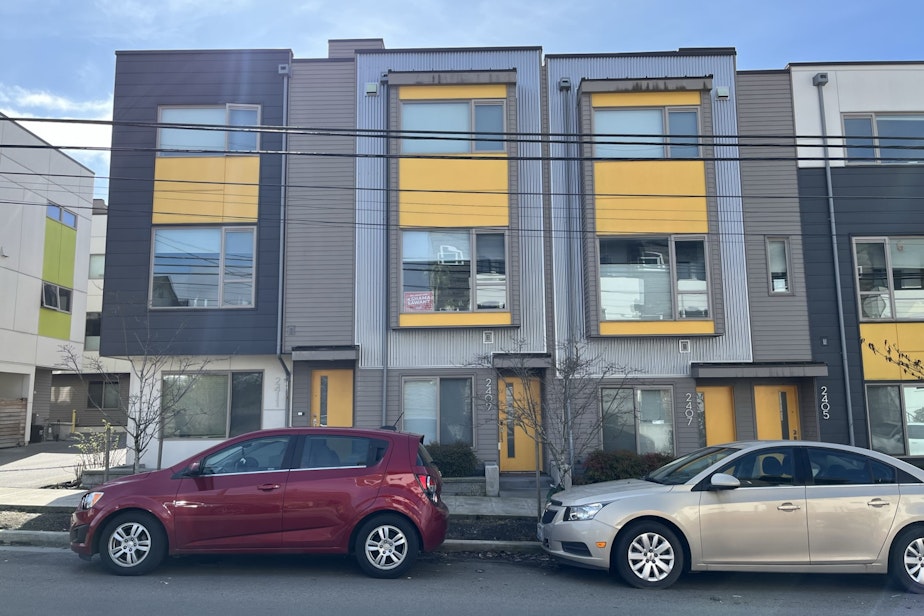
There are even laws that discourage condo buildings from sharing a single staircase. So instead, we end up with townhomes, where every unit has its own staircase.
Stairways take up a lot of precious space in the floor plan. It’s like having a pet elephant. There’s no way it isn’t awkward.
The laws were designed for various purposes: In some cases, to keep big apartment buildings from moving into single-family neighborhoods. In other cases, for fire safety reasons, or to protect consumers from construction defects.
But they haven’t all been updated, as building codes and construction methods have changed. Townhomes evolved within this complex matrix of laws.
And different laws might have led to a different outcome.
They’re kind of like Charles Darwin’s finches in the Galápagos Islands, with their wildly different beaks.
An old BBC documentary describes the phenomenon: “On an island where the main food was seeds, finches had short, tough beaks for cracking them open. On the island where the main food was flowers, birds had long pointed beaks, for sucking up nectar and pollen.”
Mike Eliason, another architect, has been helping state lawmakers understand the unintended consequences of current laws, and how they helped evolve townhomes as we know them today.
“The whole, like system, is totally geared towards just delivering townhouses," Eliason says. "But they’re not accessible, they’re certainly not affordable, a lot of them aren’t even family sized."
Eliason points to the bounty of housing options we could have, if we weren’t so limited.
“Because we don’t have regulations that prioritize flats, or even two-floor maisonettes that are much wider and a much more livable, it’s a huge issue," he explains. "There are no options.”
Eliason wants lawmakers to update these laws to respond to modern conditions.
There’s a major "middle housing" bill under discussion in the Legislature right now that would allow duplexes, triplexes, quads and townhomes across more of Washington state. Lesser-known bills, also under consideration, would help determine the shape this housing takes.
Many of these bills take baby steps that would bring the state back to apartments like the Cowboy Hotel, with its simple boxy shape, where each apartment is on a single floor, so you don’t need to climb three flights to get from the bedroom to the kitchen for a midnight snack.
Matt Hutchins, the architect who loves those old Cowboy Hotel type apartment buildings, says he's found places where the laws will allow them — in Spokane and some parts of Seattle.
He’s developing a little four-plex in Spokane now, to prove the concept’s value, “because we do really have a choice in how we grow. And this next generation of housing bills, or the comprehensive plan, are gonna dictate the next generation of buildings.”
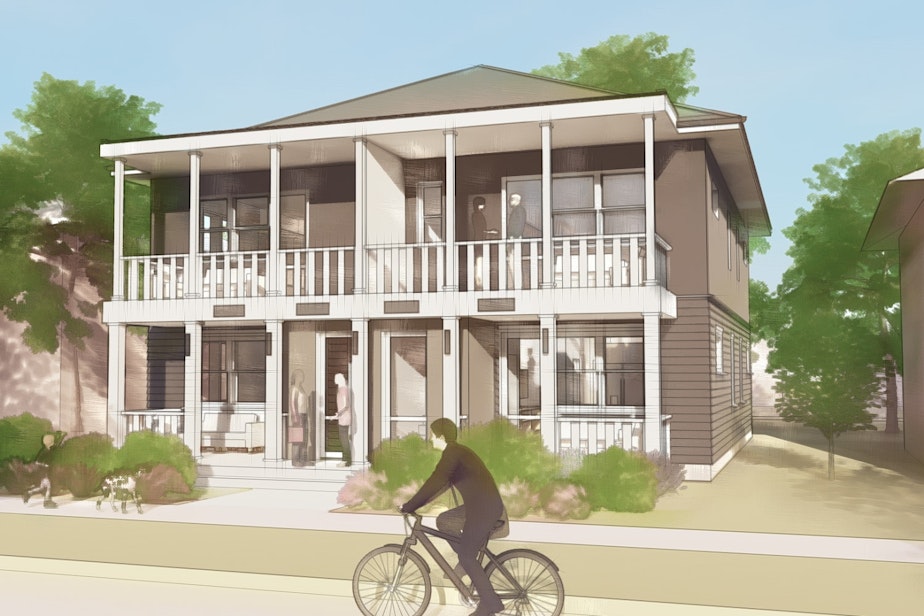
Not everyone is ready for these changes. The middle housing bill, in particular, has drawn scrutiny from the Association of Washington Cities, whose lobbyist Carl Schroeder has argued those statewide reforms will lead to local problems. The bill has made accomodations to address those concerns, but did not win his blessing.
Smaller reform bills have attracted less fire, due in part to their smaller scopes. They include a condo liability reform bill, another bill that would allow single-stair buildings in more places and discourage cities from putting subjective conditions on housing developments (preventing them from being simple and boxy, for example), and other bills that would help people from marginalized communities afford those new homes.
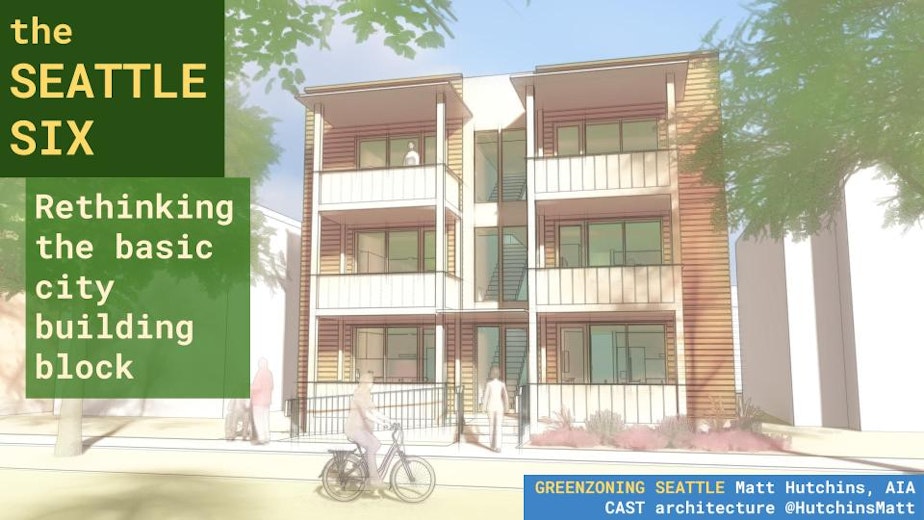
While he's waiting for reforms, Hutchins has a plan, which he hopes will inspire other builders — to start recreating the region's older apartment buildings, first in the few areas where it's legal, and then more widely as laws are updated.
He hopes that in the end, builders will be able to respond a little more quickly and efficiently to the housing shortage, like they did a hundred years ago.



